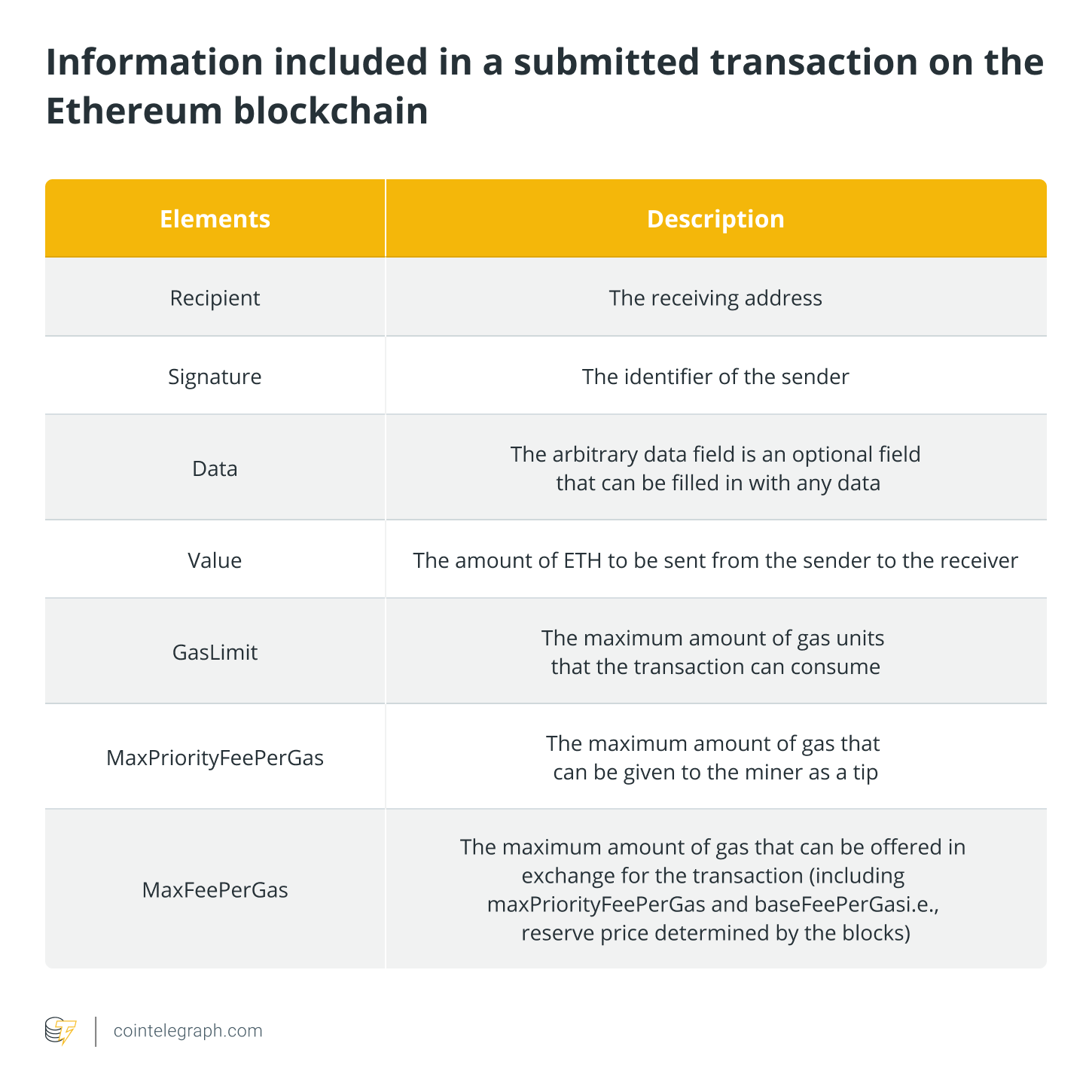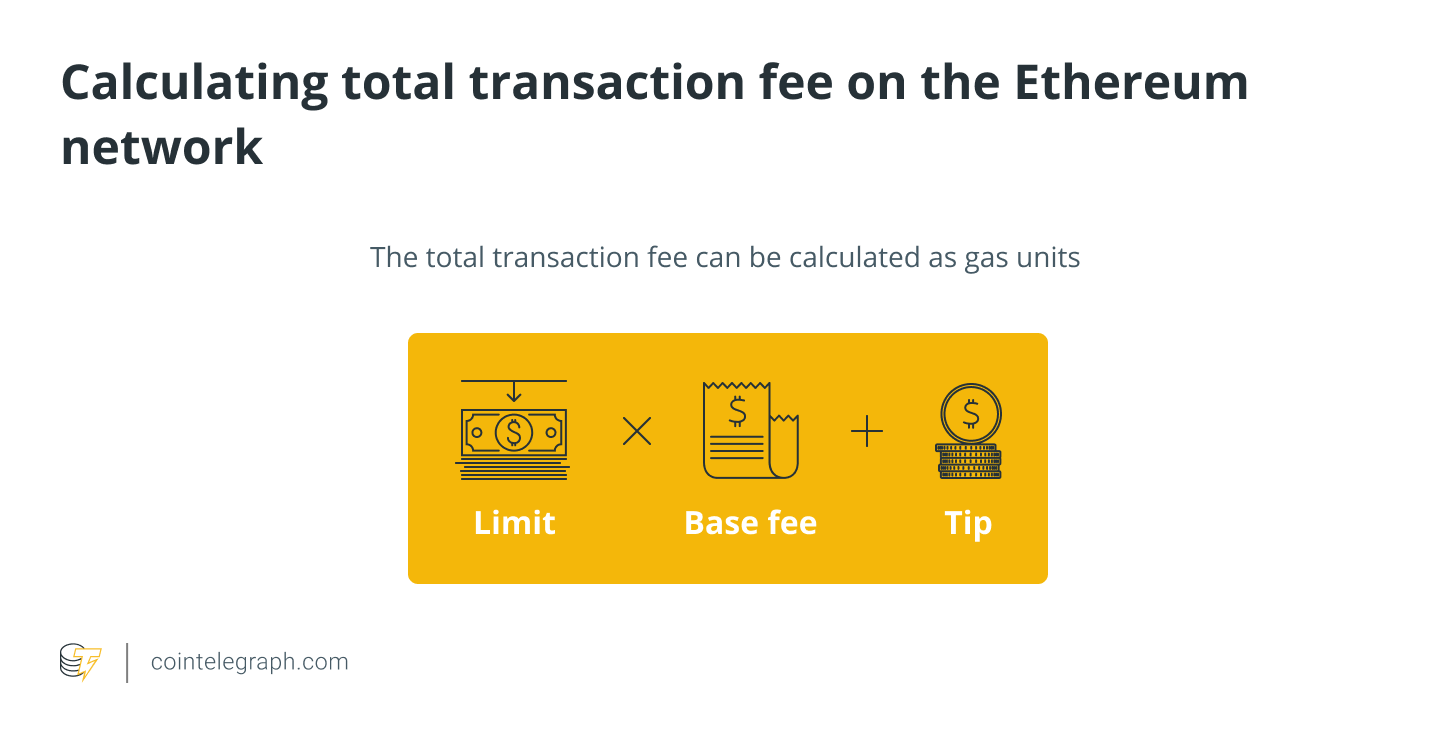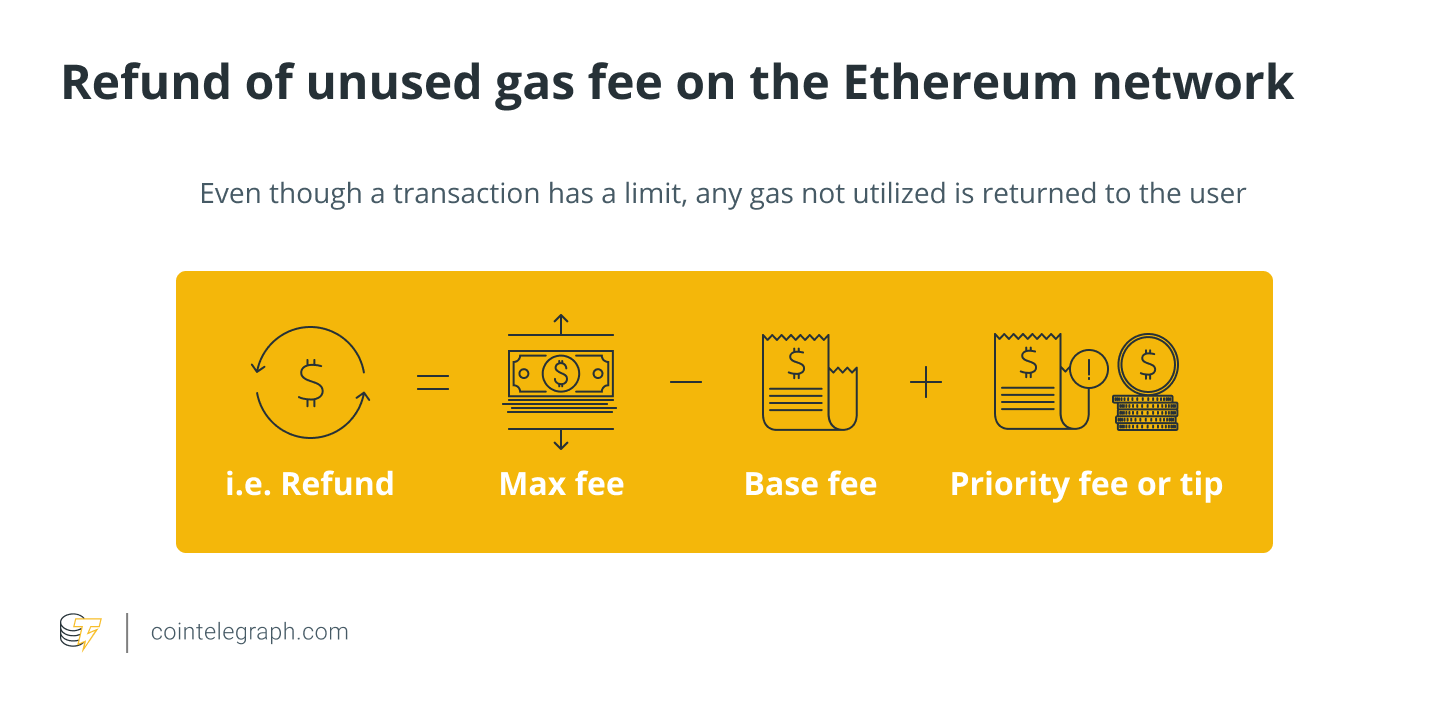Ethereum (ETH) has gone from just a whitepaper in 2013 to a billion-dollar blockchain that numerous projects have built upon. The blockchain came into existence out of co-creator Vitalik Buterin's urge for more functionality than Bitcoin (BTC) had to offer in terms of building out a surrounding ecosystem.
What exactly is the Ethereum blockchain, though? The Ethereum blockchain is a deep sea of components and qualities, making an ecosystem of surrounding solutions, such as decentralized exchanges (DEXs) and other decentralized finance (DeFi) products, possible. This article aims to help folks understand Ethereum's basics — its ins and outs, what makes the blockchain tick, and the potential held within.
To compare and contrast ETH and BTC, read — Bitcoin vs. Ethereum: Key differences between BTC and ETH
A broad overview of the Ethereum blockchain and its components
First off, what is Ethereum? Does Ethereum have its own blockchain? Yes. Ethereum is a blockchain that operates entirely separately from other native blockchains, such as Bitcoin's chain. Ethereum has its own coin, trading on crypto exchanges under the ticker ETH, which is sometimes called Ether, used in various ways throughout the crypto space.
In short, Ethereum serves as a platform of sorts — a technological framework that developers can use to build products that run on the Ethereum blockchain, utilizing its decentralized makeup.
DeFi borrowing and lending protocols, for example, let crypto holders borrow and lend crypto assets, in tandem with paying or earning interest (depending on the action) all without a centralized middle entity. Instead of a middleman, such protocols rely on computer code that is programmed to complete certain actions on the Ethereum blockchain, if the protocol is built on Ethereum. Other blockchains also exist on which developers can build.
For further general information on Ethereum, read— What is Ethereum: A beginners guide to ETH cryptocurrency
Ether
As noted above, ETH, also called Ether, is the Ethereum blockchain's native coin. ETH has several uses in the Ethereum ecosystem, such as fee payment for activities on the Ethereum blockchain.
Sending ETH from one person to another, for instance, requires the sender to spend an amount of ETH on sending the transaction through on the blockchain — essentially a payment to those putting resources toward running the blockchain. More on fees and transactions in the next section.
Each ETH coin is divisible by a certain number of decimal places. The smallest measure of ETH, 0.000000000000000001 ETH, is called a Wei. At 0.000000001 ETH (10^-9 ETH), a Gwei (gas unit) is a slightly larger amount of ETH. Instead of mentioning that your gas costs 0.000000001 Ether, you may say that it costs 1 Gwei. The term “Gwei” is short for “giga-Wei,” and it refers to a unit of 1,000,000,000 Wei.
This concept is similar to Bitcoin. Each BTC is made up of 100 million Satoshis, meaning 0.00000001 BTC equals one Satoshi.
ETH is also a well-known crypto asset traded on crypto exchanges, known to sustain significant price fluctuations.
Gas, fees and transactions
Is the Ethereum blockchain free? Not really. Gas is what makes the Ethereum world go round. In short, gas is the term used to describe the cost in ETH that it takes to send any given transaction on the Ethereum blockchain. On the Ethereum network, gas is a unit of measurement for the computing power used to execute a smart contract or a transaction.
Basically, this cost represents the necessary work conducted by blockchain miners to reflect and confirm such changes on the network. Moreover, a customer must first make a payment (i.e., send out ETH) to complete every transaction on the Ethereum network, and the interim monetary value is known as gas. Simple transfer transactions necessitate a total of 21000 gas units. High fees on Ethereum surfaced as an issue in 2020 and 2021 in line with surges in DeFi and nonfungible token (NFT) activity.
Interacting with the Ethereum blockchain requires a transaction, which is essentially a direction given to change something on the Ethereum blockchain — occurring when a person controlling an externally-owned account (more on that below) signs with their private keys to dictate that transaction. (Private keys allow crypto holders to control their assets)
Sending ETH to someone serves as an example of a transaction. It changes the network to reflect ETH ownership transfer, which requires participation by miners on the blockchain, who are paid a fee for their work. This fee is called the gas fee. Those who initiate transactions are the ones who pay the fees on those transactions. Ethereum network transactions are publicly visible on Ethereum blockchain explorers.
The following information is included in a submitted transaction:

After the London upgrade
Ethereum underwent a fork called London in 2021 that changed its fee structure, among other alterations. Instead of a straight fee paid to miners with each transaction, as was essentially the case in the past, transactions after the London fork included a base fee, a tip or priority fee and a max fee.

Base fee: The base fee is determined by comparing the preceding block's size (the total amount of gas consumed for all transactions) to the target size. If the target block size is exceeded, the base fee will increase by a maximum of 12.5% per block. Because of this exponential growth, maintaining a large block size indefinitely is economically unviable.
The base fee would be burned, decreasing the circulating supply of ETH, and the tip would go to miners as payment.
Priority fee (or tips): Miners would find it economically advantageous to mine empty blocks without tips because they would receive the same block reward. A tiny tip gives miners a minimal incentive to include a transaction under normal circumstances.
A higher tip will be required for transactions that need to be prioritized above other transactions in the same block to outbid competing transactions.
Max fee: Users can select a maximum amount they are prepared to pay for their transaction to be executed on the Ethereum network, known as the maxFeePerGas parameter (which is optional).
The maximum fee must be more than the total of the base fee and the tip for a transaction to be completed. The difference between the maximum fee and the sum of the base fee and tip is reimbursed to the transaction sender.

The fork also brought in the ability for Ethereum blocks to expand and contract based on traffic, with the base fee adjusting accordingly. Furthermore, Ethereum prevents bad actors from spamming the network by charging a gas fee for each computation performed on it.
Don't know what a block is? For a general understanding of blockchain technology, read — How does blockchain work? A beginners guide to blockchain technology
Nodes
Blockchain nodes, in general, serve as interactive information storage points on any given blockchain. Blockchain technology depends on numerous participants across the globe, keeping each other accountable for transaction and network consensus.
A trio of distinct node types exists on the Ethereum blockchain — light, full, and archive nodes — depending on the node runner's goals, computing power, and hardware storage availability.
Light nodes only utilize a limited, shortened amount of data from blocks on the chain, and they must sync with other full nodes on the network to ensure accuracy.
Full nodes carry significantly more blockchain data and history and can put together historical data on command.
Lastly, archive nodes hold the entire history of the Ethereum blockchain — all previous blocks filled with transactions and data. The size of the Ethereum blockchain is quite large, taking up considerable storage, making the question “how big is the Ethereum blockchain” a logical query for people interested in running an archive node on Ethereum.
The other two nodes are Ethereum Virtual Machine (EVM) and mining nodes. EVMs are essentially in charge of providing a runtime that can execute smart contract code. The nodes that belong to miners are referred to as mining nodes. These nodes are connected to the same network as the EVM.
Accounts
Accounts on the Ethereum blockchain serve many purposes and come in two forms. The first is called an externally-owned account (EOA). This type of account is a point on the Ethereum blockchain that anyone can create for free to store, receive and send ETH or tokens built on the Ethereum blockchain, such as ERC-20 tokens. Sending or receiving assets via EOAs requires action from an outside source.
The second type of account on the Ethereum blockchain is known as a contract account. Contract accounts are coded setups on the Ethereum blockchain that complete actions if certain conditions are met.
Entities program contracts to complete the actions they want to occur based on a trigger. For example, a smart contract might be programmed to send a certain amount of ETH to a company as payment on the third of every month, using the time to trigger the action. With the account owner sending ETH from their EOA to the contract to hold for when payment time comes around. In contrast to EOAs, contract accounts cost ETH to set up.
Ethereum's blockchain also includes the concept of Nonces. A nonce is essentially a unique number that is part of the data for any given transaction or block. PoW nonces on Ethereum are distinct numbers that come with each newly mined block. Account nonces on Ethereum's blockchain ensure that double spending is avoided by keeping track of transacted amounts.
EOAs can interact with each other, and with contracts. Contracts can also communicate with other contracts and EOAs, but cannot act without a trigger.
The topic of EOAs overlaps with crypto wallet usage. For an explanation of how crypto wallets work, take a look at — Ethereum wallets: A beginner's guide to storing ETH.
Ethereum Virtual Machine (EVM)
EVM is a computation engine that functions as a decentralized computer with millions of applications that can be executed. The EVM is the core framework of the Ethereum blockchain. It essentially dictates how the overall system runs and maintains itself, taking changes into account.
The EVM's job is to add new features to the blockchain to reduce problems with the distributed ledger. The EVM is used by every Ethereum node to maintain blockchain consensus.
Ethereum allows for smart contracts, which are pieces of code that run on the platform. The code inside the EVM is entirely isolated, which means it has no access to the network, file system, or other processes.
A contract written in smart-contract coding is transformed into what is known as bytecode. The majority of the source code that is used in smart contracts is written in the Solidity programming language. The data is then translated into opcodes that the EVM can understand. The operation codes are then used by the EVM to accomplish specific tasks.
Hence, the EVM's job is to keep the Ethereum blockchain in line, similar to a human body's skeletal system.
Smart contracts
Smart contracts are distinct blockchain addresses on compatible networks that are accompanied by specific codes. Developers construct these coded addresses to complete a function of the developer's choosing, pending an external transaction triggers the smart contract. Smart contracts are processed on the Ethereum Virtual Machine (EVM) in the case of the Ethereum blockchain.
Moreover, an Ethereum smart contract is essentially an account on the Ethereum blockchain, dictated by code to complete an action automatically if a user sends a transaction to that account. The coding and launching of a smart contract on the Ethereum blockchain requires the user to spend ETH as gas fees to interact with the Ethereum blockchain.
Setting up a smart contract charges the initiator a greater amount of ETH than sending ETH from one wallet to the next. Once deployed, smart contracts are unmodifiable and final, while transactions sent to smart contracts are also permanent (i.e., impedes retroactive alteration).
Smart contracts are a big deal in the crypto industry as they usher in significant potential and are the basis for decentralized applications (DApps), such as DEXs. A DApp is a service or solution touting an interface with which people can interact, while the operation on the backend is run by smart contracts on a compatible distributed ledger, such as Ethereum. Not all blockchains are smart contract-compatible though. Additionally, smart contracts can be created and run without distributed ledger technology.
Ethereum mining, blocks and consensus
Ethereum is a blockchain running according to a proof-of-work (PoW) consensus algorithm. Numerous pieces of computer hardware dedicated to mining Ethereum run continuously all over the world, helping to run and secure the Ethereum blockchain. Each computer hardware setup is called a miner.
These miners run constantly, trying to find the answers to complicated puzzles. Finding a solution to a puzzle is called validating a block. Each block contains a certain number of transactions and a mining reward.
The winning miner receives that reward, as well as the fees associated with the transactions included in that block. The Ethereum blockchain is made of a continuous number of these blocks, each including data tying it to previous and subsequent blocks.
One of the miners will eventually solve the problem and broadcast it to the rest of the network. The other miners will check the response and, if it is correct, will double-check each transaction before accepting the block, and adding it to their ledger instance, and paying out the rewards.
For more information on consensus, blocks and how blockchains work, read — How does blockchain work? Everything there is to know
Ethereum 2.0 — The blockchain's future
Ethereum is in the midst of a transition to Ethereum 2.0 (Eth2), a solution to scale the blockchain and convert its consensus mechanism from proof-of-work to proof-of-stake (PoS). Scaling has been an issue for Ethereum, given the high fees the blockchain has required, at times, for those participating in certain Ethereum-based DeFi solutions.
PoS in general is touted as less energy-intensive than PoW and relies on holders of the PoS blockchain's native asset — called stakers, in contrast to miners on PoW — to run the network. Ethereum's PoS blockchain will rely on validators — holders who have staked 32 ETH — to run the Ethereum 2.0 blockchain. The transition to Eth2 started in December 2020, with the launch of the Eth2 Beacon Chain, although the transition, as a whole, is expected to take some time.
Learn about Eth2 here — Ethereum upgrades: A beginner's guide to ETH 2.0
Disclaimer : The above empty space does not represent the position of this platform. If the content of the article is not logical or has irregularities, please submit feedback and we will delete or correct it, thank you!